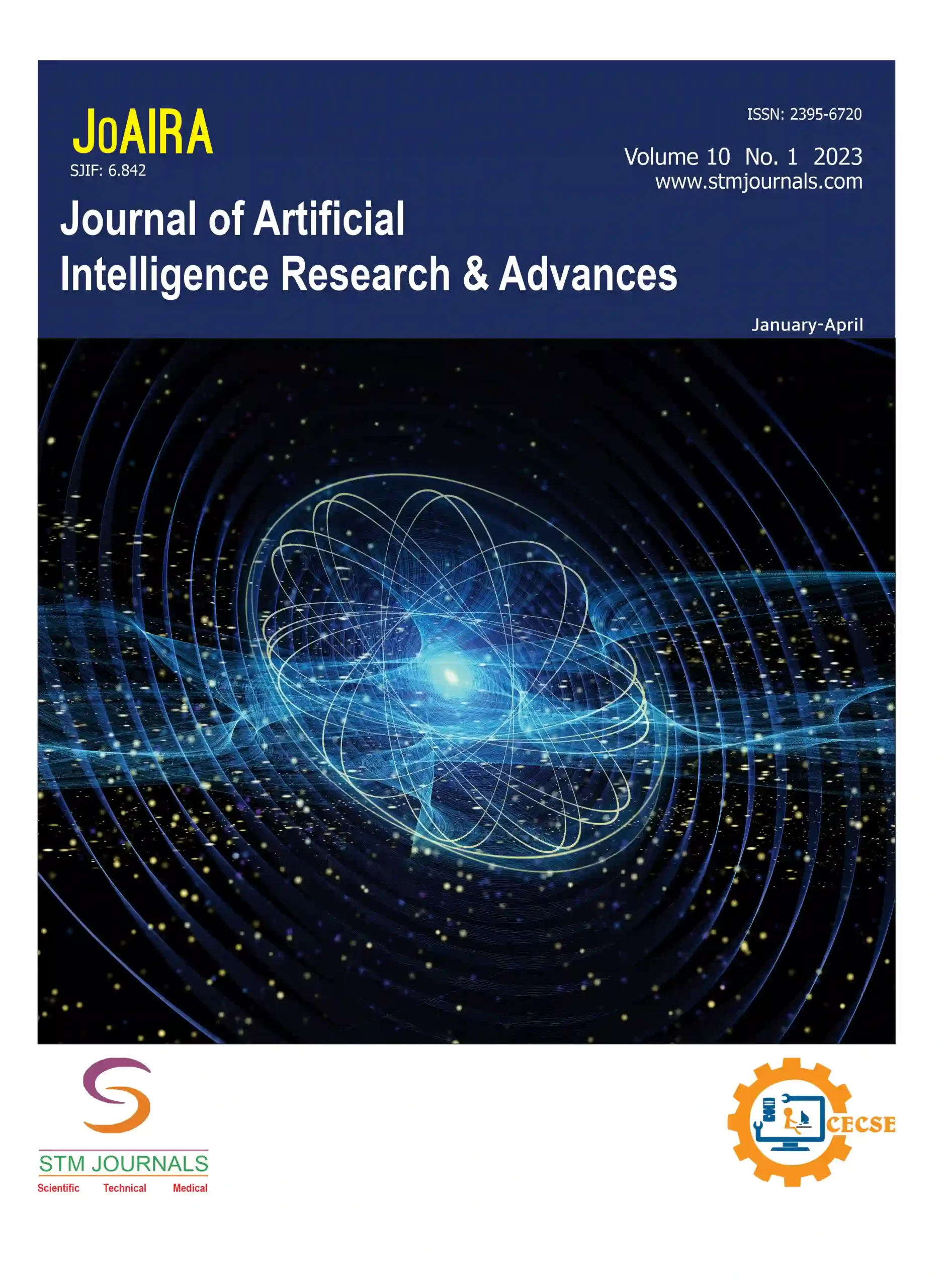
Surya Pratap

Harsh Tekwani

Ratnesh Chandra

Suhail Javed Qureshi
- Student MCA, Manav Rachna International Institute of Research and Studies, Faridabad Haryana India
- Student MCA, Manav Rachna International Institute of Research and Studies Faridabad Haryana India
- Student MCA, Manav Rachna International Institute of Research and Studies Faridabad Haryana India
- HoD & Professor Department of Computer Applications, Manav Rachna International Institute of Research and Studies Faridabad Haryana India
Abstract
The field of photogrammetry, historically reliant on guide strategies, is present process a metamorphosis with the emergence of AI-powered 3d modeling answers. This assessment paper delves into this evolving panorama by using evaluating and comparing various AI-pushed gear presented by means of exclusive businesses. The paper in particular makes a speciality of their effectiveness in simplifying photogrammetry workflows and facilitating the acquisition of 3D gadgets. The analysis contains a diverse range of tools, together with open-supply systems like NeRF through NVIDIA, Blender NeRF, LeRF, Open3D, and PyTorch3D. additionally, the potential of the use of Generative antagonistic Networks (GANs) and other generative AI equipment for photogrammetry packages is explored. thru a complete examination of their functionalities, strengths, and barriers, the paper gives treasured insights into the modern kingdom of AI-powered answers for photogrammetry. It also identifies key areas for destiny development and sheds light at the capability for AI to further revolutionize this vital era. This evaluates pursuits to function a valuable useful resource for researchers, practitioners, and absolutely everyone interested by knowledge the effect of AI on photogrammetry and its capacity
Keywords: Photogrammetry, 3D modelling, NeRF, LeRF, Open3D, PyTorch3D, GAN, Generative AI
[This article belongs to Journal of Artificial Intelligence Research & Advances(joaira)]
References
- Szeliski R. Computer vision: algorithms and applications. Springer Nature; 2022 Jan 3.
- Bello SA, Yu S, Wang C, Adam JM, Li J. Deep learning on 3D point clouds. Remote Sensing. 2020 May 28;12(11):1729.
- Farshian A, Götz M, Cavallaro G, Debus C, Nießner M, Benediktsson JA, Streit A. Deep-Learning-Based 3-D Surface Reconstruction—A Survey. Proceedings of the IEEE. 2023 Oct 30.
- Horne R. 3D printing for dummies. John Wiley & Sons; 2023 Sep 5.
- Chen A, Xu Z, Zhao F, Zhang X, Xiang F, Yu J, Su H. Mvsnerf: Fast generalizable radiance field reconstruction from multi-view stereo. InProceedings of the IEEE/CVF international conference on computer vision 2021 (pp. 14124-14133).
- Dai A, Diller C, Nießner M. Sg-nn: Sparse generative neural networks for self-supervised scene completion of rgb-d scans. InProceedings of the IEEE/CVF Conference on Computer Vision and Pattern Recognition 2020 (pp. 849-858).
- Zhang K, Riegler G, Snavely N, Koltun V. Nerf++: Analyzing and improving neural radiance fields. arXiv preprint arXiv:2010.07492. 2020 Oct 15.
- Barron JT, Mildenhall B, Tancik M, Hedman P, Martin-Brualla R, Srinivasan PP. Mip-nerf: A multiscale representation for anti-aliasing neural radiance fields. InProceedings of the IEEE/CVF International Conference on Computer Vision 2021 (pp. 5855-5864).
- Kerr J, Kim CM, Goldberg K, Kanazawa A, Tancik M. Lerf: Language embedded radiance fields. InProceedings of the IEEE/CVF International Conference on Computer Vision 2023 (pp. 19729-19739).
- Zhou QY, Park J, Koltun V. Open3D: A modern library for 3D data processing. arXiv preprint arXiv:1801.09847. 2018 Jan 30.
- Ravi N, Reizenstein J, Novotny D, Gordon T, Lo WY, Johnson J, Gkioxari G. Accelerating 3d deep learning with pytorch3d. arXiv preprint arXiv:2007.08501. 2020 Jul 16.
- Zhang J, Chen X, Cai Z, Pan L, Zhao H, Yi S, Yeo CK, Dai B, Loy CC. Unsupervised 3d shape completion through gan inversion. InProceedings of the IEEE/CVF Conference on Computer Vision and Pattern Recognition 2021 (pp. 1768-1777).
- Wang X, Ang MH, Lee GH. Point cloud completion by learning shape priors. In2020 IEEE/RSJ International Conference on Intelligent Robots and Systems (IROS) 2020 Oct 24 (pp. 10719-10726). IEEE.
- SENSING R. Photogrammetry and Remote Sensing. ISPRS Journal of Photogrammetry & Remote Sensing. 1998;53(l7):38.
- Sinha RK, Pandey R, Pattnaik R. Deep learning for computer vision tasks: a review. arXiv preprint arXiv:1804.03928. 2018 Apr 11.
- Mu F, Sifferman C, Jungerman S, Li Y, Han M, Gleicher M, Gupta M, Li Y. Towards 3D Vision with Low-Cost Single-Photon Cameras. InProceedings of the IEEE/CVF Conference on Computer Vision and Pattern Recognition 2024 (pp. 5302-5311).

Journal of Artificial Intelligence Research & Advances
| Volume | 11 |
| Issue | 02 |
| Received | May 24, 2024 |
| Accepted | June 23, 2024 |
| Published | July 10, 2024 |
function myFunction2() {
var x = document.getElementById(“browsefigure”);
if (x.style.display === “block”) {
x.style.display = “none”;
}
else { x.style.display = “Block”; }
}
document.querySelector(“.prevBtn”).addEventListener(“click”, () => {
changeSlides(-1);
});
document.querySelector(“.nextBtn”).addEventListener(“click”, () => {
changeSlides(1);
});
var slideIndex = 1;
showSlides(slideIndex);
function changeSlides(n) {
showSlides((slideIndex += n));
}
function currentSlide(n) {
showSlides((slideIndex = n));
}
function showSlides(n) {
var i;
var slides = document.getElementsByClassName(“Slide”);
var dots = document.getElementsByClassName(“Navdot”);
if (n > slides.length) { slideIndex = 1; }
if (n (item.style.display = “none”));
Array.from(dots).forEach(
item => (item.className = item.className.replace(” selected”, “”))
);
slides[slideIndex – 1].style.display = “block”;
dots[slideIndex – 1].className += ” selected”;
}

